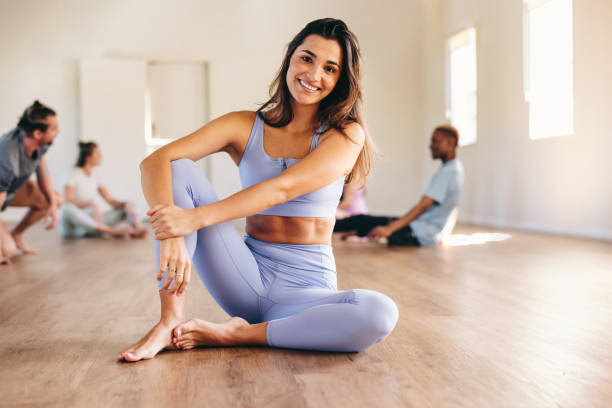In today's world, clothing is no longer just about style—it’s about functionality. Whether you’re an athlete, an outdoor enthusiast, or simply someone who values comfort, moisture-wicking fabric plays a vital role in how you feel and perform. This revolutionary textile innovation has transformed the way garments are designed, offering a blend of breathability, dryness, and odor resistance that traditional materials can’t match.
What is Moisture-Wicking Fabric?
Moisture-wicking fabric refers to specially engineered textiles that draw moisture (usually sweat) away from the skin to the outer surface of the fabric, where it evaporates quickly. This process helps keep the wearer dry, comfortable, and cool, especially during intense physical activity.
This fabric is a game-changer in activewear, offering performance-enhancing benefits that go beyond basic comfort. From gym sessions to hiking adventures, it keeps moisture at bay and skin irritation to a minimum.
How Does It Work?
The mechanism behind moisture-wicking fabric lies in two fundamental properties: hydrophobicity and capillary action.
- Hydrophobic fibers: These repel water, preventing moisture from saturating the fabric and staying in contact with the skin.
- Capillary action: This process draws moisture up along thin fibers, spreading it across a large surface area for quicker evaporation.
By combining these two functions, moisture-wicking materials maintain a dry microclimate between your skin and clothing, which is crucial during prolonged activity.
Common Types of Moisture-Wicking Fabrics
Several materials are either naturally moisture-wicking or treated to perform that way. Common examples include:
- Polyester: Lightweight, durable, and quick-drying.
- Nylon: Similar to polyester but softer and more resistant to wear.
- Merino Wool: A natural option that also offers thermal regulation and odor resistance.
- Polypropylene: Exceptionally hydrophobic and used in base layers.
- Blends: Combinations of synthetic and natural fibers for optimized performance.
Key Benefits of Moisture-Wicking Fabric
1. Keeps You Dry
One of the most immediate benefits of moisture-wicking fabric is its ability to keep you dry. Whether you’re running a marathon or walking in the sun, staying dry reduces discomfort and prevents skin irritation or chafing.
2. Regulates Temperature
These fabrics help maintain an optimal body temperature by allowing sweat to evaporate instead of pooling on your skin. This thermal regulation is particularly useful in both summer and winter clothing.
3. Controls Odor
Since sweat is moved away quickly and does not linger in the fabric, there’s less chance for bacteria growth—one of the primary causes of body odor.
4. Lightweight and Comfortable
Modern moisture-wicking fabrics are designed to be breathable and light, offering a superior fit and feel for active users. They don’t cling to the skin and move freely with the body.
5. Quick Drying
Even after being washed, these fabrics tend to dry faster than traditional cotton or wool, making them ideal for travel and outdoor excursions.
Applications of Moisture-Wicking Fabric
Athletic Apparel
The most well-known use of moisture-wicking technology is in sportswear. T-shirts, leggings, shorts, and sports bras often incorporate these materials for enhanced performance.
Outdoor Gear
Hikers, campers, and climbers benefit from moisture-wicking base layers and mid-layers that keep them dry during demanding activities.
Workwear
Workers in construction, warehouses, or hot environments use moisture-wicking clothing to stay comfortable throughout the day.
Everyday Clothing
With increasing demand, casual wear now integrates moisture-wicking properties into undershirts, socks, and even office attire for added comfort.
Caring for Moisture-Wicking Clothing
To ensure that the performance benefits of these fabrics are preserved, proper care is essential:
- Avoid using fabric softeners—they can block the capillaries in the fibers.
- Wash in cold or warm water using mild detergent.
- Air-dry or tumble-dry on low settings to maintain fabric integrity.
- Turn clothes inside out to wash away embedded sweat and oils.
Things to Consider When Buying Moisture-Wicking Fabric
- Fabric composition: Ensure a high percentage of synthetic moisture-wicking fibers.
- Fit: A snug but not tight fit allows moisture to transfer efficiently.
- Activity type: Some fabrics are better suited to low-impact activities, while others are designed for high-intensity performance.
- Brand credibility: Opt for manufacturers known for quality and performance-focused clothing.
Conclusion
Moisture-wicking fabric is more than a trend—it’s a crucial component in modern textile innovation. From its scientific mechanism to its varied applications, it elevates comfort and performance for virtually anyone. Whether you're training for a race, working long hours, or simply want more comfort in your daily wear, incorporating moisture-wicking fabrics into your wardrobe is a smart, sweat-free decision.





Comments